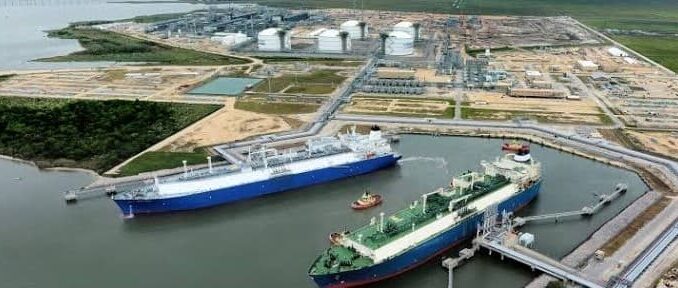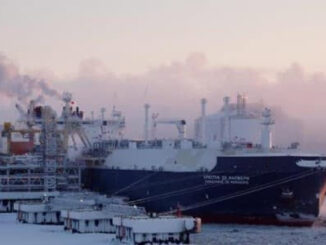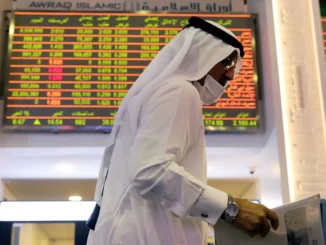
- WoodMac: The long-term outlook on global LNG demand is bullish.
- New supply – especially from Qatar and the United States – is set to hit the market in 2025-2026.
- Even amid concerns about cost inflation, developers of LNG projects in the United States are set to approve a record-high volume of export capacity this year.
The United States and Qatar are frontrunners – by a mile – as the LNG exporters best positioned to capture the global demand for additional supply capacity over the next two decades.
That’s the estimate by Wood Mackenzie, which sees the abundant, low-cost natural gas resources in the world’s current top two LNG exporters as the key factor for their export capacity growth.
In addition, the U.S. and Qatar also have competitive pricing and “astute commercial partnering,” which could secure them a combined market share exceeding 60% by 2040, WoodMac says. At present, the two LNG export giants already hold 40% of global supply between them. The U.S. and Qatar, alongside other LNG developing and exporting countries, will need to focus on three key factors to be at the forefront of the next wave of LNG supply, according to the energy consultancy. These are keeping costs in check, working to reduce emissions from LNG projects, and betting on Asia for continued growth in LNG demand.
LNG Demand Outlook Is Bullish
The long-term outlook on global LNG demand is bullish, according to WoodMac’s gas and LNG experts Massimo Di-Odoardo, Giles Farrer, and Dulles Wang. Additional 100 million metric tonnes per annum (mmtpa) of capacity will be required to meet demand growth by the mid-2030s. This is a 25% increase compared to current global LNG supply and on top of the supply that has already been sanctioned.
Asia will be the driving force of demand in the long term, WoodMac’s experts say, despite the current European rush to secure LNG to replace Russian gas, even with long-term contracts, which were frowned upon in Europe until Russia invaded Ukraine.
“Europe’s policy pivot away from gas limits upside for LNG suppliers beyond 2030. Thereafter, it’s all about Asia as the region’s developing economies lean more heavily on gas while striving to move away from coal,” Wood Mackenzie’s analysts say.
Earlier this year, Shell, the world’s largest LNG trader, said that the significantly higher demand for liquefied natural gas in Europe is set to intensify competition with Asia in the short term and to dominate LNG trade in the longer term. Related: ‘This Is Rigged’ Protesters Shut Down 70% of Scottish Fuel Supplies
New supply – especially from Qatar and the United States – is set to hit the market in 2025-2026, Shell said in a bullish outlook on the fuel through 2040. Around 80% of new LNG supply by 2030 will come from those two major LNG exporters, Shell noted.
However, the supermajor warned that another supply-demand gap could be looming in the late 2020s without new investment in additional supply.
Cost And Labor Challenges To The Next LNG Supply Boom
With interest rates and supply-chain costs surging, LNG developers will need to limit cost inflation in project development and execution. The LNG developers who manage to do it will be better positioned to capture the demand growth opportunity, Wood Mackenzie says.
Hiring and keeping construction workers and operators for the next wave of U.S. LNG export facilities could be a challenge and raise the costs of the projects, Paul Marsden, president of the Energy global business unit at one of the top contractors in the industry, Bechtel, told Reuters earlier this month.
Labor costs and work scheduling issues could add headwinds to the boom of U.S. LNG projects, which have already faced supply-chain cost inflation and increased competition to secure long-term buyers and financing. Despite the surge in LNG demand and the abundance of natural gas in the United States, America’s next LNG export boom could stall as costs have surged and financing has become more complicated with the higher interest rates.
However, even amid concerns about cost inflation, developers of LNG projects in the United States are set to approve a record-high volume of export capacity this year.
Just last week, NextDecade took the final investment decision for the first phase of a new LNG facility in Texas after it secured $18.4 billion in funding. The first phase of the Rio Grande LNG will consist of three liquefaction trains, with Phase 1 having already secured long-term offtake commitments from buyers including Shell, Exxon, TotalEnergies, Engie, and several Chinese energy companies, as well as Portugal’s Galp, and Japan’s Itochu Corporation.
Long-term LNG contracting for the U.S. developers has seen a flurry of deals in recent months, including from buyers in Europe, where energy security has taken center stage at the expense of concerns about emissions from natural gas imports.
Still, lower-carbon LNG with CO2 capture will likely attract more buyers in the coming years, analysts say.
WoodMac’s experts note, “As security of supply concerns fade, buyers and governments are refocusing on lowering CO2 emissions. The industry must seize this opportunity: reducing upstream, liquefaction and shipping emissions will prolong LNG demand through the energy transition.”
Both NextDecade’s Rio Grande LNG and Qatar’s massive expansion, the world’s largest LNG project, feature CO2 emission-reduction technologies. The Rio Grande LNG project will have a planned carbon capture and sequestration project to bring lower-carbon-intensive LNG to global markets.
Qatar’s huge LNG expansion plans also feature CO2 sequestration projects. Saad Sherida Al-Kaabi, the Minister of State for Energy Affairs and QatarEnergy’s President and CEO, said last week that “Qatar’s LNG carbon intensity is probably the lowest in the world.”
According to Al-Kaabi, “40% of all the new LNG that will come to the market by 2029, when all our projects are up and running, is going to be from QatarEnergy.”



